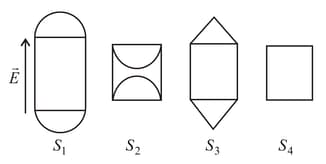B M Sharma Solutions for Chapter: Electric Flux and Gauss's Law, Exercise 1: DPP
B M Sharma Physics Solutions for Exercise - B M Sharma Solutions for Chapter: Electric Flux and Gauss's Law, Exercise 1: DPP
Attempt the free practice questions on Chapter 2: Electric Flux and Gauss's Law, Exercise 1: DPP with hints and solutions to strengthen your understanding. Chapterwise/Topicwise Daily Practice Problems (DPP) Electrostatics and Current Electricity JEE Main & Advanced solutions are prepared by Experienced Embibe Experts.
Questions from B M Sharma Solutions for Chapter: Electric Flux and Gauss's Law, Exercise 1: DPP with Hints & Solutions
A linear charge rod having linear charge density penetrates a cube diagonally and then, it penetrates a sphere diametrically as shown. What will be the ratio of flux coming out of cube and sphere?
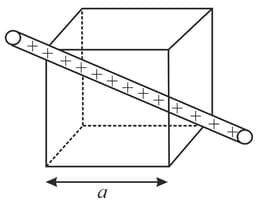
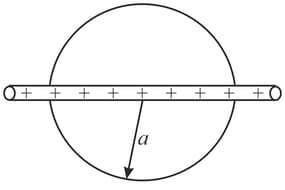
A ring of radius is placed in the plane with its centre at origin and its axis along the axis and having uniformly distributed positive charge. A ring of radius and coaxial with the larger ring is moving along the axis with constant velocity. Then, the variation of electric flux passing through the smaller ring with position will be best represented by,
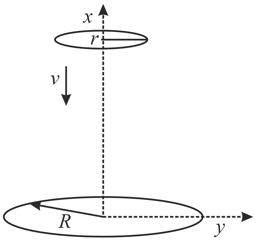
A positive point charge is placed (on the axis of the disc) at a distance of above the center of a disc of radius as shown in situation The magnitude of electric flux through the disc is Now, a hemispherical shell of a radius is placed over the disc such that it forms a closed surface as shown in situation The flux through the curved surface in the situation taking direction of area vector along outward normal as positive is
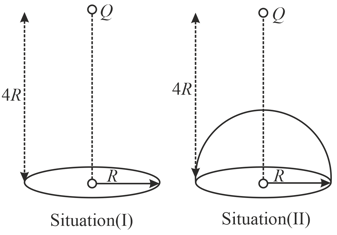
Figure shows, in cross section, three solid cylinders, each of length and uniform charge . Concentric with each cylinder is a cylindrical Gaussian surface, with all three surfaces having the same radius. Rank the Gaussian surfaces according to the electric field at any point on the surface, greatest first.
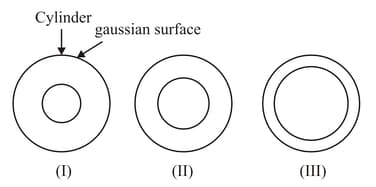
Figure shows four solid spheres, each with charge uniformly distributed through its volume. The figure also shows a point for each sphere, all at the same distance from the center of the sphere. Rank the spheres according to the magnitude of the electric field they produce at point .
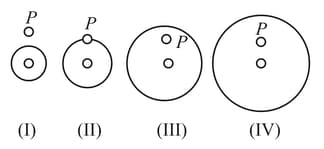
In the figure, a hemispherical bowl of radius is shown. Electric field of intensity is represented in each situation by direction lines.
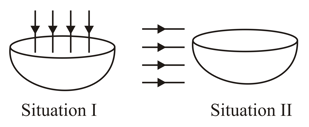
Figure shows, in cross section, two Gaussian spheres and two Gaussian cubes that are centered on a positively charged particle. Select the correct alternatives.
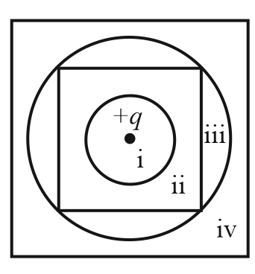
Figure shows four Gaussian surfaces consisting of identical cylindrical midsections but different end caps. The surfaces are in a uniform electric field that is, directed parallel to the central axis of each cylindrical midsection. The end caps have these shapes: , convex hemispheres; , concave hemispheres: , cones: , flat disks.
